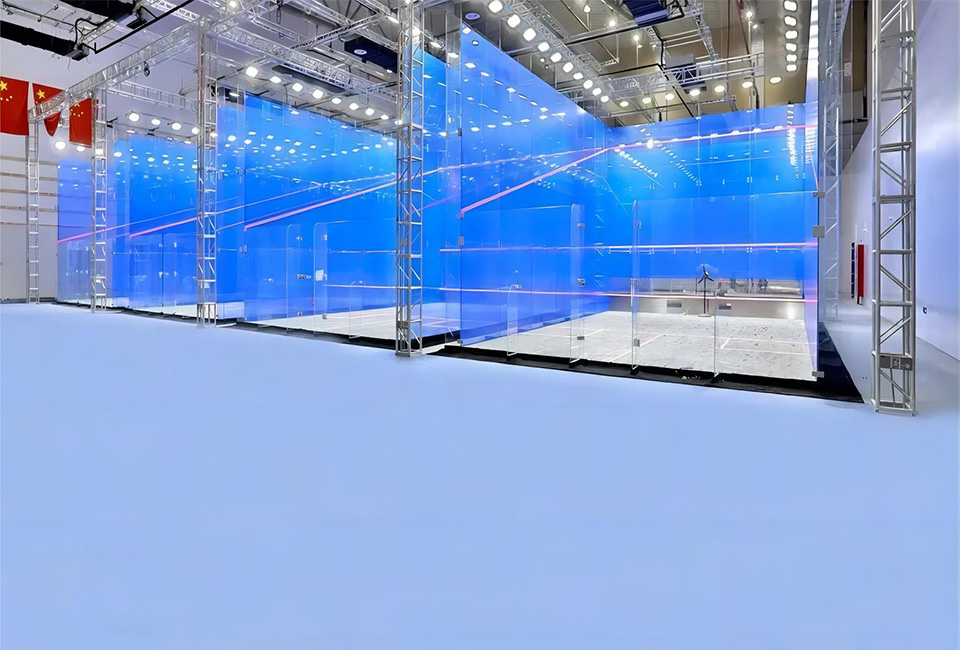

Exploring the Squash Court A Comprehensive Overview
Squash is a fast-paced racquet sport played in an enclosed court, offering a unique blend of physical exertion, tactical gameplay, and social interaction. A squash court is specifically designed to enhance the dynamics of this game, featuring distinct dimensions and surfaces that make it ideal for both recreational and competitive play.
Court Dimensions and Design
A standard squash court is 32 feet long and 21 feet wide, with a minimum height of 15.5 feet. The walls of the court are typically constructed of a smooth, hard surface, which allows the ball to rebound at varying angles, creating numerous strategic possibilities. The front wall, the primary playing surface, is 15.5 feet tall and is marked with a series of lines that define the service box and the out-of-bounds area.
The walls are painted in bright colors, often white or cream, to enable better visibility of the ball during frantic rallies. The floor is generally made from wood or a specialized sports surface designed to absorb impact and reduce the risk of injury, making it suitable for intense matches.
The Court’s Layout
The squash court is segmented by several lines and markings. The service box is located in the center of the court, where players must serve the ball to start play. After the serve, both players rally, aiming to hit the ball against the front wall while ensuring that it does not go out of bounds. The ball must not touch the ground before reaching the front wall and should ideally rebound within the marked lines.
An essential feature of the squash court layout is the T area, where the two lines intersect at the center of the court. Control of this region is crucial as it allows players to position themselves optimally to return shots. The player who dominates the T typically has the upper hand in rallies, allowing for easier access to the ball and better angles for strategic play.

Playing Squash Rules and Strategies
One of the fascinating aspects of squash is its unique scoring system. Matches are usually played as best of five games, with each game played to 11 points. Points can be scored by either player, regardless of who served, ensuring an engaging and unpredictable experience.
Tactical play in squash involves more than just strong physical ability; it requires a keen understanding of the opponent’s weaknesses and court strategy. Players often use a variety of strokes—such as drives, drops, and lobs—to manipulate the ball's trajectory and pace, making it difficult for the opponent to respond effectively.
Health Benefits of Playing Squash
Playing squash offers numerous health benefits. It is an excellent cardiovascular workout that improves endurance, agility, and speed. As a full-body exercise, squash enhances muscle strength and can aid in weight management. Moreover, the sport's blend of aerobic and anaerobic activity helps improve heart health and overall fitness levels.
Beyond physical benefits, squash also promotes mental agility. The fast pace and need for quick decision-making enhance cognitive function and concentration. Players often develop stronger problem-solving skills as they anticipate their opponent’s moves and strategize their gameplay accordingly.
Conclusion
The squash court is more than just an enclosed space for playing; it is a dynamic arena where athletic skill meets strategic thinking. As a sport, squash promotes physical fitness, mental acuity, and social interaction, making it a popular choice for players of all ages and skill levels. Whether you are a seasoned competitor or a casual player, the squash court offers an engaging environment that fosters growth and enjoyment in the world of sports. So grab your racquet, hit the court, and experience the exhilaration of squash firsthand!
High-Performance Industrial Flooring Solutions China Paddle Tennis Court for Sale
High-Performance Industrial Flooring Solutions Durable & Cost-Effective
Homogeneous Transparent Floor – Durable & Stylish Rubber Floor Solutions
Premium Homogeneous Transparent Floor for Durable & Stylish Spaces Rubber Floor Solutions
Premium Sports Floor Solutions Durable PVC Sports Floor & Rubber Floor for Gyms
Durable Rubber Composite Floor Premium Rubber Floor & Mats Solutions